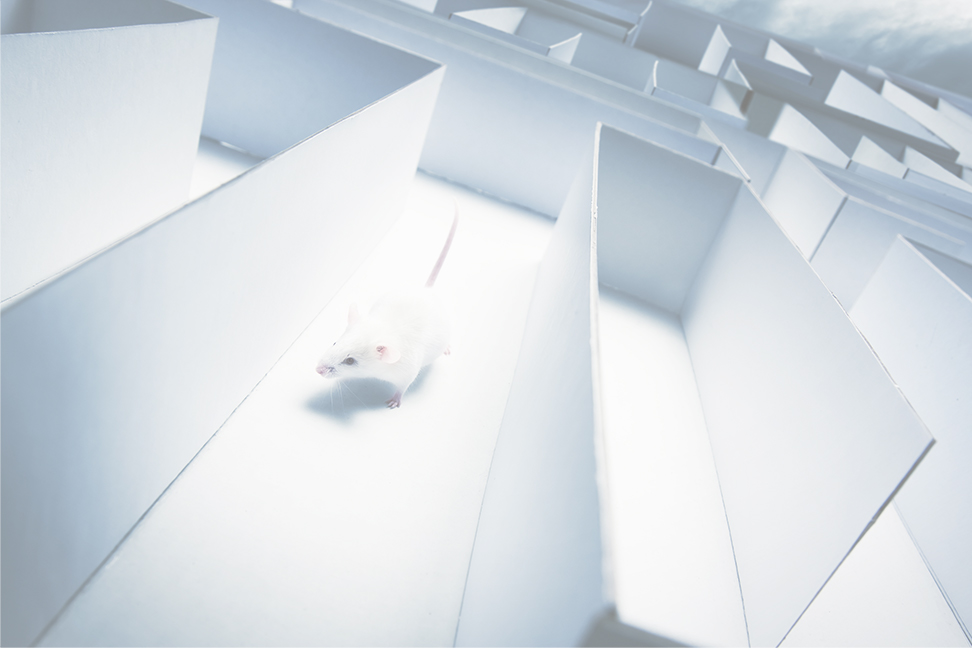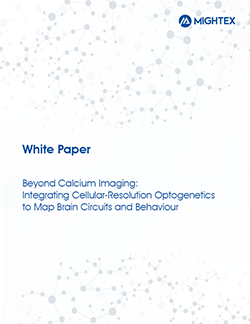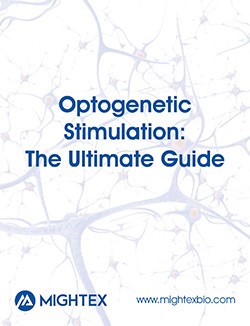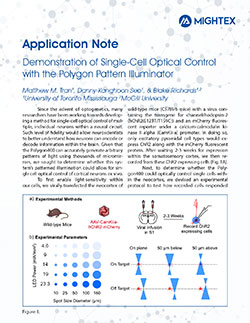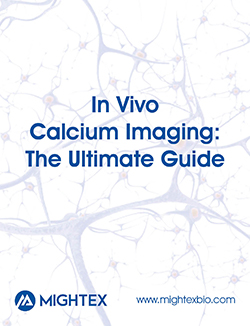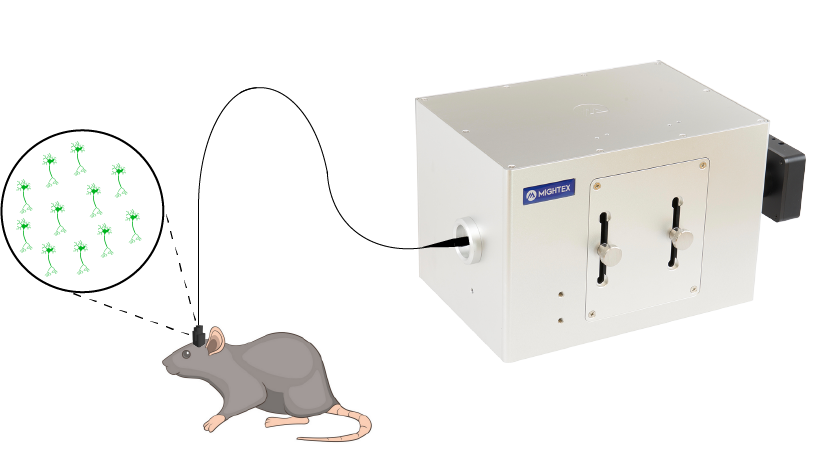Optogenetics and calcium imaging have greatly advanced the field of neuroscience by making it possible to manipulate and image neural activity in vivo with cellular-resolution. Using these techniques in a freely-behaving animal enables researchers to stimulate/control and visualize neurons or regions, individually or simultaneously, in order to study the relationship between neural circuits and animal behaviour. Below you can find application examples.
Freely-Behaving GCaMP Imaging
In this video, a freely-behaving mouse is connected to the OASIS Implant via an imaging fiber (on the right). The OASIS Implant is imaging GCaMP signals from the striatum (on the left) during the animal’s behaviour (Courtesy of Dr. Alexxai Kravitz, Washington University in St. Louis).
Freely-Behaving Cortical Targeted Optogenetics
In this video, the OASIS Implant with the Polygon pattern illuminator is being used to target specific parts of the cortex with optogenetic stimulation (top right corner) in a freely-behaving animal. The optogenetic stimulation corresponds to a behavioural response, and this changes depending on where the optogenetic stimulation is targeted (Courtesy of Dr. Zhigang He and Noaf Salah, Harvard University).
Freely-Behaving Calcium Imaging and Optogenetics
with Mightex’s OASIS Implant
OASIS Implant Inquiry
"*" indicates required fields



